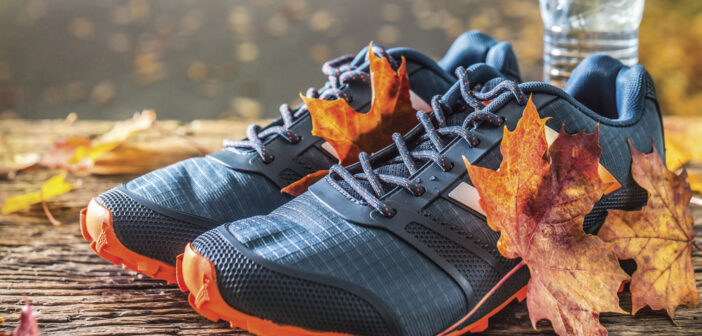Keeping your feet in good health is paramount to your overall well-being. Your feet are the foundation for your biomechanics and are the link to you and your physical environment. High-quality, properly-fitting shoes are the key to providing your feet with support, protection and cushioning during your ambulatory hours.
Purchase your shoes from a reputable shoe store that allows you to try them on a treadmill or outside in the parking lot. Athletic shoes should feel comfortable from the minute you put them on and should not require a “break-in” period. You wouldn’t buy a car without a test drive – the same should be true with your shoe gear. Shoes should be replaced after about 500 miles of use. For most people, this means a new pair of primary shoes at least once a year. I use a Sharpie marker to write the purchase date in my shoes underneath the sock liner. You’d be surprised how long you’ve had some of your shoes.
Over-the-counter or custom orthotics are useful if you have symptoms or conditions that warrant their use. There’s no need to have orthotics when your feet feel fine in regular shoes. Orthotics are often a necessary device to treat a variety of biomechanical conditions, but don’t get pressured into purchasing a pair because they’re “better” for your feet.
Persistent foot and ankle pain that occurs more than once a day for over a week should be addressed. No one should tolerate constant foot and ankle pain. Many problems are solved by simple non-surgical means such as shoe adjustments and padding.
Your feet are the foundation for your biomechanics and are the link to you and your physical environment.
For dry skin on your feet, most over-the-counter lotions and creams work well if used regularly. If there is no improvement after 2-3 weeks of regular and routine use of a moisturizer, you may have another underlying condition causing dry skin such as long-term athlete’s foot or other dermatological issue. A variety of OTC antifungal products are available; keep in mind that long-term athlete’s foot usually doesn’t itch. Therefore, if your dry skin doesn’t improve with regular moisturizer creams, try OTC antifungal cream such as Clotrimazole.
Weight gain over time is a significant factor in foot and ankle pain. Americans are more overweight than ever. Our country is the horn of plenty, where inexpensive and unhealthy food is abundant and readily accessible. Every one pound of extra body weight functions like four pounds of additional weight on your feet. Try placing a 15-20-pound dumbbell in a backpack and walk around for a few hours. You will find this taxing on your feet, ankles and entire body. Now, think how good you would feel if you could lose that weight. Nearly all of my patients who have lost significant body weight comment on how their foot pain has been basically eliminated. Trendy diets are not sustainable over the long term – in order to lose weight, you must burn more calories than you consume. You can become overweight eating healthy, whole food just the same as with junk food. Michael Polin, author of Food Rules (which I highly recommend), said: “Eat food, not too much, mostly plants.” Less weight on your feet will eliminate a great deal of pain.
Your feet contain approximately 28% of the bones in your body and are the pillars upon which our bodies rest. Support, proper maintenance and care of these pillars will allow you to lead the active lifestyle you deserve.








